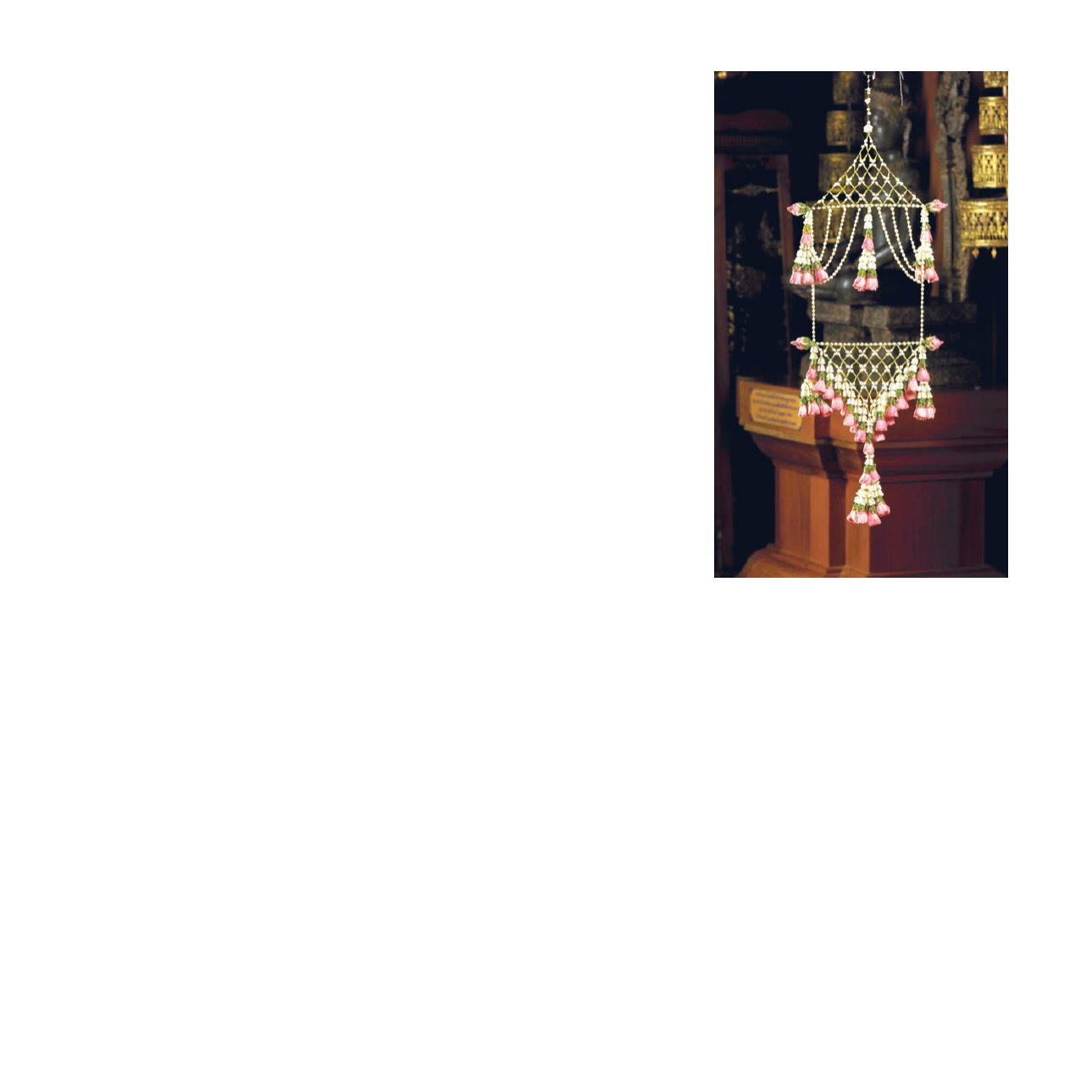

116
|
Culture Ways of Life and Wisdom
Fresh Flower
Arrangement
The Art of Flower Refinement
The combination of flowers, leafs, and petals in a form of fresh flower arrangement is one of
the traditional Thai craftsmanship. It brings the fragrant and fragile petals of the Thai flowers to the
magnificent flower arrangements in various forms to be used in the royal ceremonies and traditional
festivals. The value of this craftsmanship is highly regarded for cultural identity and represents the
delicate Thai ways of life and their excellence in artistic work.
The craftsmanship of fresh flower arrangement is one of the three branches of Ngan Chang
Khrueang Sot (Fresh Material Craftsmanship), comprising soft carving, banana stalk carving and
fresh flower arrangement. Each of them has unique identity and requires specific skills and expertise
of the craftsman.
The center of competencies in fresh flower craftsmanship is from the wisdom of the floral
craft making ladies in the inner court of the royal palace who arrange fresh flowers for the king and
the royal family members and for Buddhist worships during important ceremonies and festivals.
For instance, in the reign of King Rama I, Chao Chom Manda Tani was skillful in creating garlands
and sewing banana leaves. In the reign of King Rama IV, Princess Lamom created splendid floral
mobiles, such as a Raya Plaengphuangkaeo, Wiman Phra-in, and Wiman Thaen. In the reign of King
Rama V, Queen Saovabha Phongsri designed and arranged fresh flowers in a form of Naga head,
decorating them on a dining table for welcoming foreign guests. It was the first creative idea ever.
Fresh flower arrangement is also one of the components in ceremonies and social
traditions such as robe offerings, Buddhist candle decoration, and lotus-shaped flower offerings
during the Buddhist Lent; Mahachat (story of the last great incarnation of the Buddha) Sermon
offerings; lotus-shaped flower offerings to the ancient Kings ; and artificial flower wreath offerings.
The principal methods of fresh flower arrangement include flowers threading, stitching,
Phu (tuft), Raya (hanging), Malai (garland) and Khrueang Khwaen (floral mobiles). Phum
Dokmai (Lotus-shaped flowers) is the arrangement of fresh flowers in containers, such as a tray
with a pedestal. It uses clay, sweet potato or Wintergreen wood, to be molded and sharpen into
a round piece as a base for sticking flowers, while the top is sharp, sometimes decorated with Thum
(The smaller lotus-shape flowers decoration). Most of Phum Dokmai are arranged in a lotus shape,
an upside down monk’s alms-bowl shape, and a fresh flower style. It is decorated by real flowers
and sewed with petals, probably mixed with leaves or Malai Thao [A group of Malai Sik (half circle
garland) tie together in a circle then stack vertically from large ones to smaller ones, in order to form
a lotus-shape]. Another kind of Phum is called Phum Kanthet, formerly made of fresh flowers on
a Phan (pedestal tray), Talum (receptacle, usually made of wood and inlaid with mother-of-pearls)
or Tok (wooden tray on a pedestal) surrounded by money coins glued with beeswax, which is used
as an offering to Buddhist priests (Kanthet).
“
Malai (garland), is
the art of Thai flower
craftsmanship that brings
flower, petals, leaves and
different parts of flowers
to thread them together
in a wide range of styles,
from traditional Malai
and modern designs.
”


















